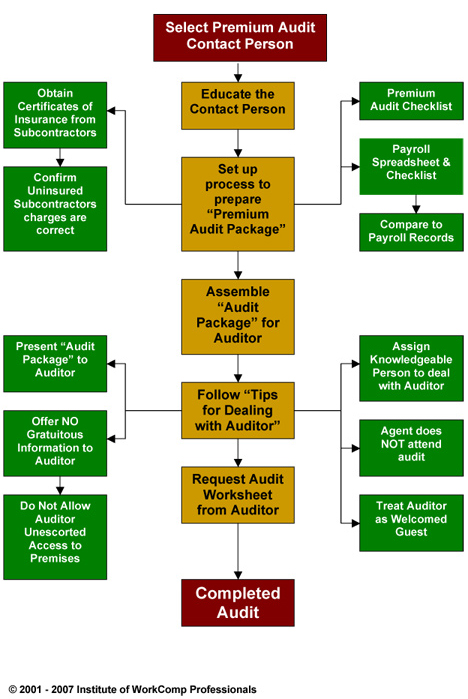The ABC’s of Premium Audit
Premium audits are often taken as routine, a requirement of Workers’ Compensation insurance. However, this approach can be costly. Chris Boggs, the Institute of WorkComp Professionals’ Director of Curriculum and Research Analyst, offers the following guidelines that should be applied to every audit:
- Always be there. A representative of the company familiar with both the operations of the company and the financial records should be present at every audit. The auditor will likely have questions and unless someone is there to answer them and explain the financial documents, the auditor may make some potentially costly assumption and/or mistakes. This duty should not be delegated to any member of the staff not intimately familiar with the business and its finances.
- Be prepared. The auditor will need all the necessary financial records to conduct the audit and will likely ask for a tour of the facility. Prepare a place for the auditor to work and help them complete their job as quickly as possible. Here is the data that you’ll need:
- Payroll records. Payroll journal and summary, 941s, state unemployment records, an explanation and break out of overtime payments and the general ledger.
- Employee records. A detailed description of job duties, the number of employees, employee hire and fire dates, and the class code splits, if applicable.
- Cash disbursements. Cost and payments to subcontractors, costs of materials and the cost of any casual labor hired.
- Certificates of insurance. Make sure to supply current certificates of insurance covering the entire period of time the contractor has worked for the insured. If the sub’s policy renews in the middle of the audit period, a new certificate should be requested covering the remainder of the insured’s policy period.
- OCIP projects. If the insured has been part of any wrap-up, the auditor needs this information in order to remove the payroll from calculation.
- Get a copy of the auditor’s work papers. Don’t let the auditor leave without getting a copy of the audit work papers. This will allow the company and the agent to review the audit and confirm that there are no errors BEFORE the audit is processed and billed (fixing it “after the fact” is more difficult).
- Don’t volunteer more information than asked. The auditor will ask questions; this is expected. Only answer the questions asked and do not lead the auditor down a path that may prove detrimental.
- Know the rules and the exceptions. Workers’ Comp is complicated. Be
ready to capitalize on exceptions.
-From The Insurance Professional’s Practical Guide to Workers’ Compensation, by Chris Boggs
NOTE: Don’t under estimate the possibility of errors. Many audits contain errors, ranging from misclassification of employees to closed claims being listed as open.
Note: As Certified Work Comp Advisors, we are trained to prepare employers for audits, spot errors and get them corrected. This helpful flow chart will help you prepare for and increase the chances of a favorable audit.
Pre Premium Audit Flowchart
